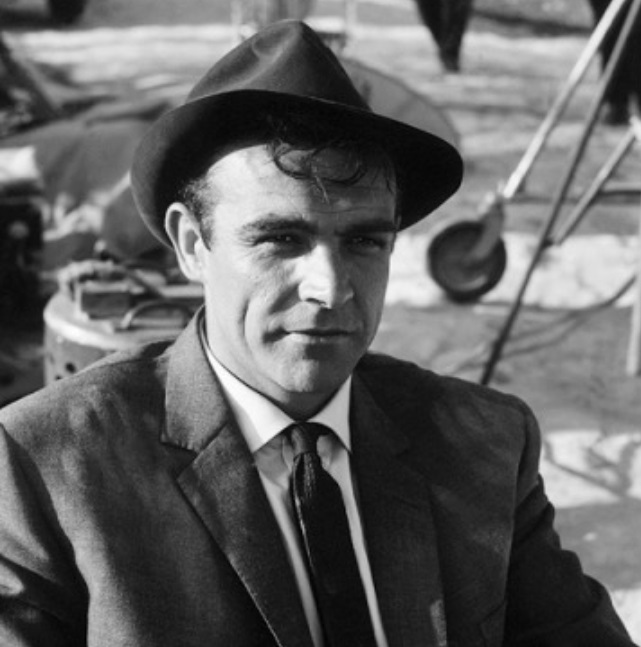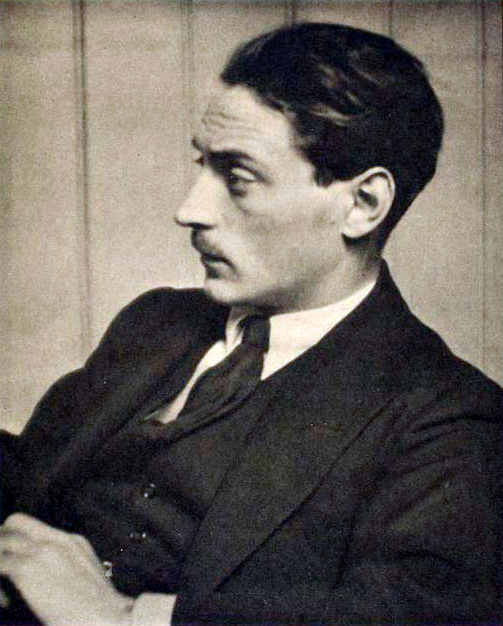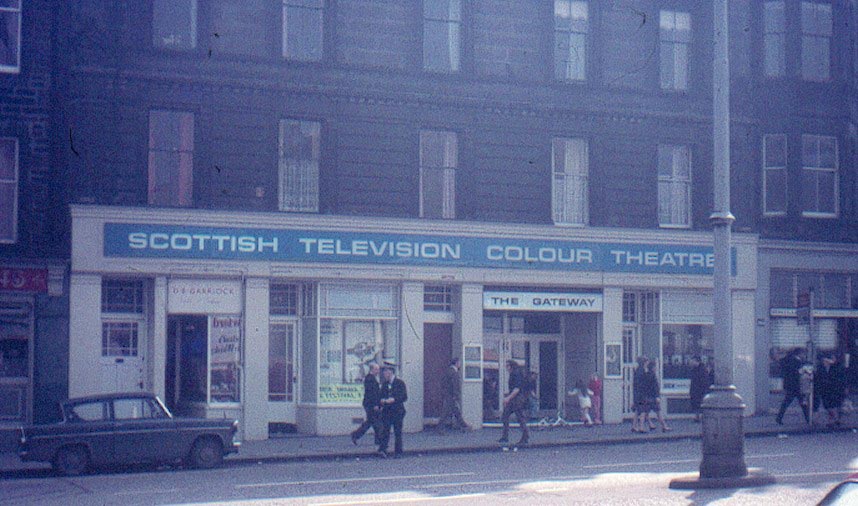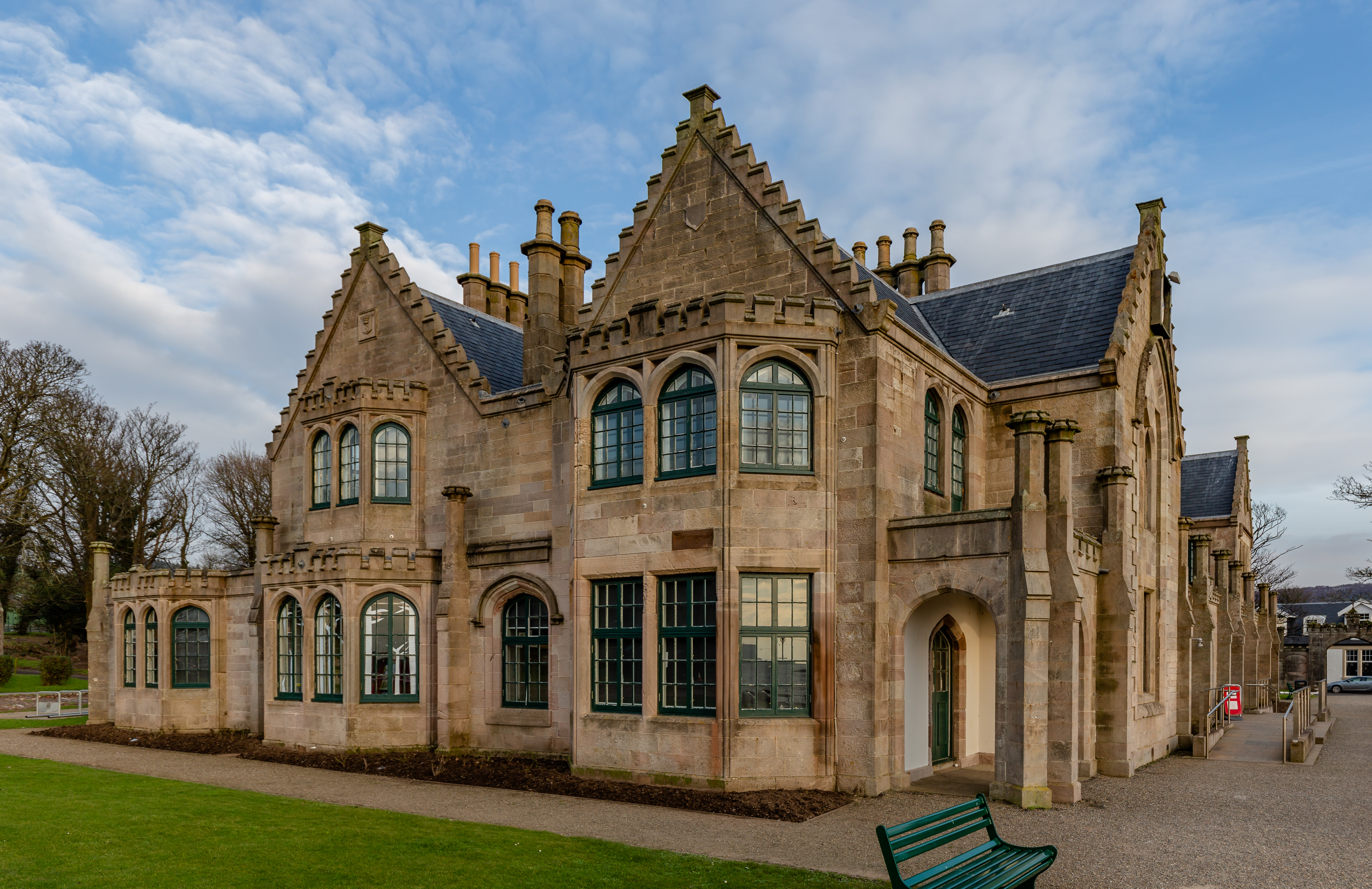|
Duncan Macrae (actor)
John Duncan Macrae (20 August 1905 – 23 March 1967) was one of the leading Scottish actors of his generation. He worked mainly as a stage actor and also made five television appearances and seventeen films. Life and career He was born at 118 Kirkland Street, Maryhill, Glasgow, the fourth of the six children of James Macrae, a sergeant in the Glasgow police force, and his wife, Catherine Graham. He attended Allan Glen's School and matriculated in the engineering faculty at Glasgow University in 1923–1924, but did not graduate. He trained as a schoolteacher at Jordanhill College, where he met Ann H Mcallister, the voice coach, who was a profound influence on his life. He taught in Glasgow until he became a professional actor in 1943, after a successful amateur drama career. He first made his name as a comic actor of distinction with Curtain Theatre, an amateur group, in 1937, in the title role of Robert McLellan's ''Jamie the Saxt'', a performance which became his "signature" ... [...More Info...] [...Related Items...] OR: [Wikipedia] [Google] [Baidu] |
Casino Royale (1967 Film)
''Casino Royale'' is a 1967 spy parody film originally distributed by Columbia Pictures featuring an ensemble cast. It is loosely based on the 1953 novel of the same name by Ian Fleming, the first novel to feature the character James Bond. The film stars David Niven as the "original" Bond, Sir James Bond 007. Forced out of retirement to investigate the deaths and disappearances of international spies, he soon battles the mysterious Dr. Noah and SMERSH. The film's tagline: "Casino Royale is too much... for one James Bond!" refers to Bond's ruse to mislead SMERSH in which six other agents are pretending to be "James Bond", namely, baccarat master Evelyn Tremble (Peter Sellers); millionaire spy Vesper Lynd (Ursula Andress); Bond's secretary Miss Moneypenny ( Barbara Bouchet); Bond's daughter with Mata Hari, Mata Bond ( Joanna Pettet); and British agents Coop (Terence Cooper) and The Detainer (Daliah Lavi). Charles K. Feldman, the producer, had acquired the film rights in 196 ... [...More Info...] [...Related Items...] OR: [Wikipedia] [Google] [Baidu] |
Whisky Galore! (1949 Film)
''Whisky Galore!'' is a 1949 British comedy film produced by Ealing Studios, starring Basil Radford, Bruce Seton, Joan Greenwood and Gordon Jackson. It was the directorial debut of Alexander Mackendrick; the screenplay was by Compton Mackenzie, an adaptation of his 1947 novel '' Whisky Galore'', and Angus MacPhail. The story—based on a true event—concerns a shipwreck off a fictional Scottish island, the inhabitants of which have run out of whisky because of wartime rationing. The islanders find out the ship is carrying 50,000 cases of whisky, some of which they salvage, against the opposition of the local Customs and Excise men. It was filmed on the island of Barra; the weather was so poor that the production over-ran its 10-week schedule by five weeks, and the film went £20,000 over budget. Michael Balcon, the head of the studio, was unimpressed by the initial cut of the film, and one of Ealing's directors, Charles Crichton, added footage and re-edited the film before it ... [...More Info...] [...Related Items...] OR: [Wikipedia] [Google] [Baidu] |
Twelfth Night
''Twelfth Night'', or ''What You Will'' is a romantic comedy by William Shakespeare, believed to have been written around 1601–1602 as a Twelfth Night's entertainment for the close of the Christmas season. The play centres on the twins Viola and Sebastian, who are separated in a shipwreck. Viola (who is disguised as Cesario) falls in love with the Duke Orsino, who in turn is in love with Countess Olivia. Upon meeting Viola, Countess Olivia falls in love with her thinking she is a man. The play expanded on the musical interludes and riotous disorder expected of the occasion, with plot elements drawn from the short story "Of Apollonius and Silla" by Barnabe Rich, based on a story by Matteo Bandello. The first recorded public performance was on 2 February 1602, at Candlemas, the formal end of Christmastide in the year's calendar. The play was not published until its inclusion in the 1623 First Folio. Characters * Viola – a shipwrecked young woman who disguises herself a ... [...More Info...] [...Related Items...] OR: [Wikipedia] [Google] [Baidu] |
William Shakespeare
William Shakespeare ( 26 April 1564 – 23 April 1616) was an English playwright, poet and actor. He is widely regarded as the greatest writer in the English language and the world's pre-eminent dramatist. He is often called England's national poet and the " Bard of Avon" (or simply "the Bard"). His extant works, including collaborations, consist of some 39 plays, 154 sonnets, three long narrative poems, and a few other verses, some of uncertain authorship. His plays have been translated into every major living language and are performed more often than those of any other playwright. He remains arguably the most influential writer in the English language, and his works continue to be studied and reinterpreted. Shakespeare was born and raised in Stratford-upon-Avon, Warwickshire. At the age of 18, he married Anne Hathaway, with whom he had three children: Susanna, and twins Hamnet and Judith. Sometime between 1585 and 1592, he began a successful career in London as an ... [...More Info...] [...Related Items...] OR: [Wikipedia] [Google] [Baidu] |
Malvolio
Malvolio is a fictional character in William Shakespeare's comedy ''Twelfth Night, or What You Will''. His name means "ill will" in Italian, referencing his disagreeable nature. He is the vain, pompous, authoritarian steward of Olivia's household. Style In the play, Malvolio is defined as "a kind of Puritan". He despises all manner of fun and games, and wishes his world to be completely free of human sin, yet he behaves very foolishly against his stoic nature when he believes that Olivia loves him. This leads to major conflicts with characters such as Sir Toby Belch, Sir Andrew Aguecheek, and Maria, mistress of the household. Much of the play's humour comes from Maria, Feste, Toby Belch, and Andrew Aguecheek tormenting Malvolio with drinking, joking, and singing. After Malvolio interrupts their party and chastises them for their lewdness, Maria devises a way to gain revenge on the steward, which she proposes to Sir Toby and the others. Maria composes a love letter in Olivia's h ... [...More Info...] [...Related Items...] OR: [Wikipedia] [Google] [Baidu] |
James Bridie
James Bridie (3 January 1888 in Glasgow – 29 January 1951 in Edinburgh) was the pseudonym of a Scottish playwright, screenwriter and physician whose real name was Osborne Henry Mavor.Daniel Leary (1982) ''Dictionary of Literary Biography: Modern British Dramatists 1900-1945'', Stanley Weintraub Ed., Gale, Detroit Ronald Mavor (1988) ''Dr. Mavor and Mr. Bridie: Memories of James Bridie'', Canongate and The National Library of Scotland He took his pen-name from his paternal grandfather's first name and his grandmother's maiden name. Life He was the son of Henry Alexander Mavor (1858–1915), an electrical engineer and industrialist, and his wife Janet Osborne. He went to school at Glasgow Academy and then studied medicine at the University of Glasgow graduating in 1913, later becoming a general practitioner, then consultant physician and professor after serving as a military physician during World War I, seeing service in France and Mesopotamia. He came to prominence with h ... [...More Info...] [...Related Items...] OR: [Wikipedia] [Google] [Baidu] |
Edinburgh International Festival
The Edinburgh International Festival is an annual arts festival in Edinburgh, Scotland, spread over the final three weeks in August. Notable figures from the international world of music (especially classical music) and the performing arts are invited to join the festival. Visual art exhibitions, talks and workshops are also hosted. The first 'International Festival of Music and Drama' took place between 22 August and 11 September 1947. Under the first festival director, the distinguished Austrian-born impresario Rudolf Bing, it had a broadly-based programme, covering orchestral, choral and chamber music, Lieder and song, opera, ballet, drama, film, and Scottish 'piping and dancing' on the Esplanade of Edinburgh Castle, a structure that was followed in subsequent years. The Festival has taken place every year since 1947, except for 2020 when it was cancelled due to the COVID-19 Pandemic. A scaled-back version of the festival was held in 2021. Festival directors *1947–1949: ... [...More Info...] [...Related Items...] OR: [Wikipedia] [Google] [Baidu] |
Gateway Theatre (Edinburgh)
The Gateway Theatre (built as the New Edinburgh Veterinary College) was a Category C listed building in Edinburgh, Scotland, situated on Elm Row at the top of Leith Walk. History Veterinary College The building was purpose-built by George Beattie and Sons in 1882 to accommodate W. Owen Williams' New Veterinary CollegeMackie, A.D (1965), "Forty-One Elm Row", in ''The Twelve Seasons of the Edinburgh Gateway Company, 1953 - 1965'', St. Giles Press, Edinburgh (not to be confused with the Royal (Dick) Veterinary College, which is still extant, elsewhere in the city). In 1904, the College vacated the building, with a professor and eleven students relocating to the veterinary faculty at Liverpool. The college buildings were sold to William Perry in 1908, who then applied for a roof to be built over the courtyard to create a roller-skating rink. Cinema Perry's rink did not last long and the building was converted again in 1910, by architect Ralph Pringle, into a cinema known as Pr ... [...More Info...] [...Related Items...] OR: [Wikipedia] [Google] [Baidu] |
The Kidnappers
''The Kidnappers'' (US: ''The Little Kidnappers'') is a 1953 British film, directed by Philip Leacock and written by Neil Paterson. Plot In the early 1900s, two young orphaned brothers, eight-year-old Harry (Jon Whiteley) and five-year-old Davy Mackenzie (Vincent Winter) are sent to live in a Scottish settlement in Nova Scotia, Canada, with their stern Grandfather (Duncan Macrae) and Grandmother (Jean Anderson) after their father's death in the Boer War. The boys would love to have a dog but are not allowed, Grandaddy holding that "ye canna eat a dog". Then they find an abandoned baby. Living in fear of Grandaddy (he beats Harry, the older boy, for disobeying him), they conceal it from the adults. They view the baby as a kind of substitute for the dog that they have been denied (Davy, the younger boy, asks his brother, "Shall we call the baby Rover, Harry?"). Grandaddy is having problems with the Dutch settlers who have arrived at the settlement in increasing numbers after ... [...More Info...] [...Related Items...] OR: [Wikipedia] [Google] [Baidu] |
Jean Anderson
Jean Anderson (12 December 1907 – 1 April 2001) was an English actress best remembered for her television roles as hard-faced matriarch Mary Hammond in the BBC drama '' The Brothers'' (1972–1976) and as rebellious aristocrat Lady Jocelyn "Joss" Holbrook in the Second World War series '' Tenko'' (1982–1985). She also had distinguished careers on stage and in 46 films. Early Life and Stage Mary Jean Heriot Anderson was born 12 December 1907 in Eastbourne, Sussex to Scottish parents, and grew up in Guildford, Surrey. She trained at the Royal Academy of Dramatic Art from 1926-1928. Her first professional engagement was in ''Many Waters'' at the Prince's Theatre, Bristol, in 1929 with her fellow RADA student Robert Morley. In 1934 she joined the Cambridge Festival Theatre, appearing in ''The Circle'' by Somerset Maugham and ''Yahoo'' by Lord Longford. In 1935 she played Lady Macbeth with The Seagull Players in Leeds. In 1936 Lord Longford's company from the Gate Theatre, Dub ... [...More Info...] [...Related Items...] OR: [Wikipedia] [Google] [Baidu] |
Great Cumbrae
Great Cumbrae ( sco, Muckle Cumbrae; gd, Cumaradh Mòr; also known as Great Cumbrae Island, Cumbrae or the Isle of Cumbrae) is the larger of the two islands known as The Cumbraes in the lower Firth of Clyde in western Scotland. The island is sometimes called Millport, after its main town. Home to the Cathedral of The Isles and the FSC Millport field study centre, the island has a thriving community of 1,300 residents. Geography The island is roughly long by wide, rising to a height of above sea level at The Glaid Stone, which is a large, naturally occurring rock perched on the highest summit on the island. There is a triangulation pillar nearby, as well as an orientation point which indicates the locations of surrounding landmarks. In clear conditions, views extend north over the upper Clyde estuary to Ben Lomond and the Arrochar Alps. To the west, the larger islands of Bute and Arran can be seen, while on the other side of Knapdale the Paps of Jura may be visible. Loo ... [...More Info...] [...Related Items...] OR: [Wikipedia] [Google] [Baidu] |
Millport, Isle Of Cumbrae
Millport (Scottish Gaelic: Port a' Mhuilinn) is the only town on the island of Great Cumbrae in the Firth of Clyde off the coast of mainland Britain, in the council area of North Ayrshire. The town is south of the ferry terminal that links the island to the Scottish mainland. Due to its small size, the island and its town are often linked in the minds of visitors and residents and Cumbrae is often referred to as Millport. The island offers views across to the Isle of Arran as well as of its smaller neighbour which lies barely a kilometre away, called Little Cumbrae. The Cumbraes are referred to as the ''Kumreyiar'' in the medieval Norse '' Saga of Haakon Haakonarson''. Etymology The Gaelic name ''Cumaradh'' means "place of the Cymric people", referring to the Brittonic-speaking inhabitants of the Kingdom of Strathclyde. Alternatively, the name Cumbrae may derive from ''Kil Maura'' meaning "cell or church of a female saint". History The Garrison House in the centre of town, ... [...More Info...] [...Related Items...] OR: [Wikipedia] [Google] [Baidu] |


_-_Scene_from_'Twelfth_Night'_('Malvolio_and_the_Countess')_-_N00423_-_National_Gallery.jpg)




